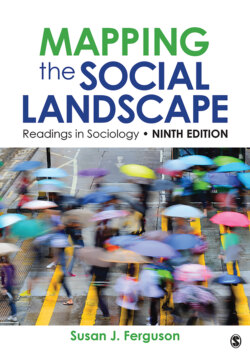Читать книгу Mapping the Social Landscape - Группа авторов - Страница 97
На сайте Литреса книга снята с продажи.
Data and Method Participants and Interviewing
ОглавлениеThe analyses presented here are based on data from 42 interviews with a diverse sample of parents, each of whom has at least one preschool-aged child (three to five years old). Interviews focused on parents’ perceptions of their children’s gendered attributes and behaviors. The preschool age range is emphasized because this is the period when most children begin to develop a clear understanding of the gender expectations around them, as evidenced in the development of gender identity and the tendency to engage in more gender-typed patterns of behavior (Maccoby 1998; Weinraub et al. 1984).
Interviews were conducted primarily in southern and central Maine (with a small number conducted elsewhere in New England), over a period ranging from the summer of 1999 to the fall of 2002. Participants were recruited through postings in local child care centers, parents’ resource organizations, community colleges, local businesses, and public housing projects and through personal networks (though none of the participants were people I knew prior to the interviews). Recruiting materials included general reference to “parents’ experiences raising sons and daughters” and did not emphasize gender conformity or nonconformity….
The 42 interviewees include 24 mothers and 18 fathers. Four of the fathers are married to women interviewed for the study as mothers. Although geographically specific primarily to northern New England, interviewees come from a relatively diverse range of family types (single-parent and two-parent families, with some of the latter being blended families), class locations (ranging from those self-identifying as poor/low income to upper middle class), racial/ethnic groups (including white, Asian American, and African American interviewees), and sexual orientations (including heterosexual and gay parents). These parents’ children include biological children, adopted children, step-children, and foster children. Interviewees’ educational backgrounds range from having completed less than a high school education to holding a doctorate, with the average years of formal schooling falling between high school graduate and college graduate. Ages range from 23 to 49 years, with the average age at 35 years. All of the men interviewed work outside the home for pay; among those in heterosexual partnerships, their female partners were roughly equally split among full-time homemakers, those employed part-time in the paid labor force, and those employed full-time. Among the mothers interviewed, about one in three are full-time homemakers, with the remainder employed part-time or full-time in the paid labor force. Interviewees average 2.5 children (with the mode being 2) and are split among those having only daughters (11), only sons (12), or at least one of each (23). The focal children on whom interviews focused include 22 sons and 20 daughters….
